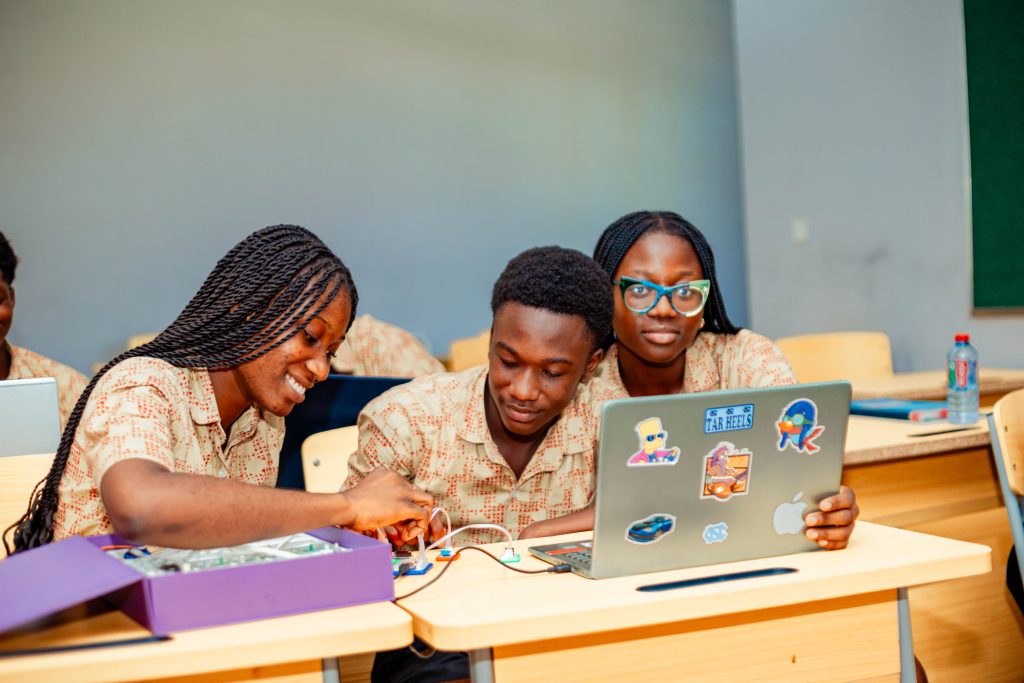Key Points at a Glance
Engaging students requires a mix of active learning strategies, technology integration, and strong teacher-student relationships.
Clear lesson objectives, variety in instructional methods, and real-world relevance help maintain focus and participation.
Formative assessments and feedback loops keep students involved in their learning process.
Schools like Morgan International Community School (MICS) achieve high engagement through student-centered instruction and innovative teaching models.
Student engagement is the heartbeat of every successful lesson. No matter how well-planned your curriculum is, if students are disengaged, learning suffers. In today’s classrooms, teachers must go beyond traditional lectures to create active, inclusive, and meaningful learning experiences.
This guide offers practical, research-backed strategies for increasing student engagement — whether you teach early learners, secondary students, or in a diverse international setting.
It also shows how Morgan International Community School (MICS) models these best practices in real classroom settings.
1. Set Clear, Relevant Learning Objectives
Students are more likely to engage when they understand the purpose of a lesson. Begin each class by outlining what students will learn and how it connects to their lives or future goals.
For example, instead of simply stating, “Today we will study photosynthesis,” say, “Today you’ll learn how plants create their own food — something that impacts every meal you eat.”
Action Tip:
Use “I can” or “We will” statements to make goals student-friendly. Display them visually on the board or screen.
2. Use Interactive Teaching Strategies
Active participation keeps students alert and invested. Incorporate strategies like:
Think-Pair-Share: Students discuss ideas with a partner before sharing with the class.
Peer teaching: Let students explain concepts to others.
Games and role-play: Simulate real-world scenarios tied to the subject.
Exit tickets: Quick responses at the end of a lesson to gauge understanding.
At MICS, teachers embed such techniques into daily instruction, allowing students to explore, question, and express their understanding in diverse ways.
3. Integrate Technology Where It Adds Value
Digital tools can transform passive learning into interactive experiences. Use platforms like:
Kahoot or Quizizz for gamified quizzes
Padlet or Jamboard for collaborative brainstorming
Google Forms for formative assessments
YouTube or simulation apps to visualize complex concepts
The key is to match the tool to the learning goal, not the other way around. At MICS, technology is used to extend learning — not distract from it — and students are trained to use devices responsibly.

4. Build Meaningful Relationships with Students
Engagement improves when students feel seen, heard, and respected. Taking time to learn students’ names, interests, and challenges helps build trust.
Incorporate moments for informal check-ins, group discussions, or reflection activities. When students know their teacher cares, they are more motivated to participate.
Action Tip:
Begin your lesson with a brief “How are you?” check-in or a short, student-led recap of the previous class.
5. Make Learning Culturally and Personally Relevant
Students tune out when lessons feel disconnected from their reality. Link content to current events, cultural practices, or local examples.
For instance, in a social studies class, connect global citizenship themes to community service projects in your area.
An example is when some MICS partnered with the Buz Stop Boys for a clean-up exercise.
6. Provide Choice and Voice
Empower students by giving them options:
- Let them choose a topic for a project
- Allow different formats (poster, video, presentation)
- Encourage them to pose questions they want answered
When students have ownership of their learning, their engagement deepens. Even small choices can boost motivation and creativity.
7. Use Formative Assessment to Guide Learning
Ongoing feedback keeps students involved and aware of their progress. Instead of waiting for a test, assess understanding during the lesson through:
- Quizzes
- Exit tickets
- Mini-whiteboard responses
- One-minute reflections
- Peer reviews
Feedback should be timely, specific, and encouraging, guiding students to take the next step in learning.
8. Vary Your Instructional Methods
Monotony kills attention. Mix up your delivery by alternating between:
- Direct instruction
- Group work
- Independent tasks
- Audio-visual elements
- Movement or kinesthetic activities
This caters to different learning styles and keeps lessons fresh. Teachers at MICS plan lessons using a multimodal approach, ensuring that all learners find their way into the content.
9. Foster a Growth Mindset
Help students see mistakes as part of learning. Promote language like:
- “You haven’t mastered it yet.”
- “Let’s try a different strategy.”
- “Every expert was once a beginner.”
Encouraging resilience and a growth mindset leads to higher engagement and risk-taking, especially when tackling challenging content.
10. Reflect and Adjust Based on Student Feedback
At the end of a lesson or week, ask students:
- What helped you learn best?
- What confused you?
- What would you like to do more of?
This shows students their voice matters and helps you refine your strategies for better engagement.
Schools like MICS promote a culture of reflection — among both students and teachers — to continually improve the learning experience.
Final Thoughts
Student engagement doesn’t happen by accident — it is designed, cultivated, and sustained through intentional strategies and relationship-building. Whether you’re a new teacher or a seasoned educator, consistently applying these practices can transform your classroom into a thriving, dynamic space where students are eager to learn.
As schools like Morgan International Community School (MICS) demonstrate, creating engaging lessons is not about flashy tools or gimmicks — it’s about knowing your learners, setting clear goals, and making learning relevant and joyful.
